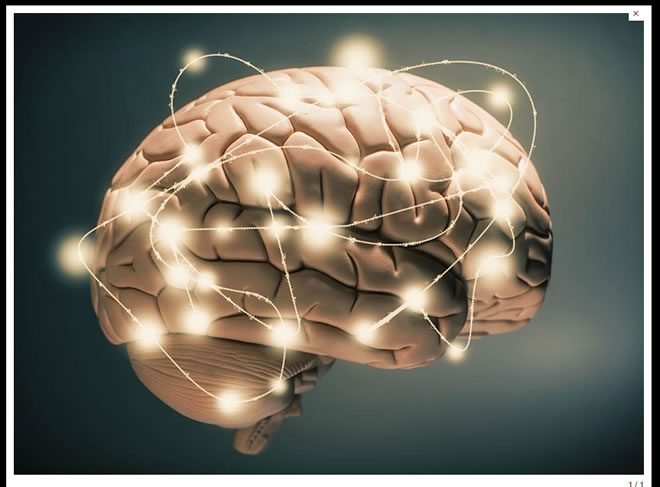We've learned a lot, but think how much more there is to discover

By Tom Solomon
Thursday, March 19, 2015

On Brain Awareness Week we can be thankful for remarkable research developments, but we still don’t really have a grasp on how the pattern of electrical and chemical signals results in such amazing things as consciousness, intelligence, and creativity
Throughout the day, different parts of your body clamour for attention: you get a rumbling in the stomach, and know it is time for lunch; you run too fast for the bus, and your pounding heart tells you to slow down and wait for the next one; you overdo it in the gym, and your muscles will let you know about it the next day.
But what about your brain? When was the last time you sat in a quiet, darkened room with no distractions and allowed your brain to think about itself? Maybe you never have.
Despite some remarkable advances, the brain remains largely a mystery. We know it is made up of about 100 billion nerve cells, called neurons, connected like wires in a giant telephone exchange. We know messages pass down them like electrical signals, and jump from one neuron to the next by release of neurotransmitter chemicals. We even know where many of the different brain functions, such as memory, sight, and smell, reside. But what we don’t really have a grasp on is the link between the micro and the macro: how the pattern of electrical and chemical signals results in such amazing things as consciousness, intelligence, and creativity.
Much of our knowledge comes from studying brain function when things go wrong. One of the most famous cases was an American railroad worker Phineas Gage, who, more than 150 years ago, was cramming gunpowder into a rock with an iron bar when it exploded. The bar was fired up into his left cheek and out of the top of his head, landing like a javelin 25 yards away. Amazingly, Gage survived the injury, but he was not the same person; his personality had changed. Previously he was quiet and respectful, and had actually been the foreman. Afterwards, according to his doctor he was “fitful, irreverent, indulging at times in the grossest profanity… with the animal passion of a strong man.” This loss of inhibitions releasing his animal passions was caused by damage to the frontal lobe of his brain.
150 years later, we still describe people as “frontal” if they are disinhibited by damage to this critical part of the brain. I have one such patient who always calls me darling, complimenting me on my gorgeous hair and blowing me a kiss. Although it is lovely to see her and she brightens up the clinic, this is not normal behaviour (especially considering the usual state of my hair).
Frontal lobe disinhibition is relatively common, but rarer brain conditions can give us even more intriguing insights. For example, I have one patient who was suddenly unable to read, even though his vision seemed normal. He could even write normally, but bizarrely couldn’t read the words he had just written. This condition, known as alexia without agraphia, is caused by a tiny stroke, a blockage in blood supply, damaging the corpus callosum, a collection of neurons that connect the two halves of the brain. So although he could see the words and process the images in his visual cortex, his brain could not send this information to the language areas on the left side of the brain where it is interpreted and “read”. Thankfully he improved over a few days.
During Brain Awareness Week, it might be a good time to stop and think about your brain, if you rarely do. The week celebrates and international campaign started in 1995 to raise awareness of the progress and benefits of brain research. Over the last twenty years there have been some remarkable developments. We have completely new drugs for inflammatory conditions like multiple sclerosis; we are better at treating brain infections, such as meningitis and encephalitis; management of brain tumours and strokes has come on in leaps and bounds. But there are still enormous gaps. We have barely had an impact on the degenerative diseases, like motor neuron disease and dementia. In these conditions neurons just wither away and die, but we do not understand the basic triggers and disease mechanisms fully.
The death from dementia of the writer Terry Pratchett last week highlighted the huge remaining challenges in this area. He spent his last few years thinking a lot about his brain and its shrinking cortex. He even tried an experimental light treatment to slow the decay, but to no avail. Another author who spent time pondering his brain was Roald Dahl. He was fascinated by the impact of disease on this organ, believing that his own creative abilities were unleashed by a tremendous bash on the head in a plane crash. He also had the unique claim of helping develop a neurosurgical device - a valve to treat his son Theo’s hydrocephalus, or water on the brain.
You may not have Pratchett’s creative talents, or Dahl’s inventive genius, but spend a little time this week alone with your brain. Let it know you cherish its extraordinary abilities. And if you are one of those people who attack it now and again with tobacco or excess alcohol, maybe for Brain Awareness Week just give it a break.
For Information about Tom Solomon’s book on Roald Dahl and his fascination with medicine, see: www.liv.ac.uk/roalddahl
Prof Tom Solomon is Professor of Neurology at the Walton Centre NHS Foundation Trust, and Director of the Institute of Infection and Global Health, University of Liverpool. Follow him on twitter @RunningMadProf